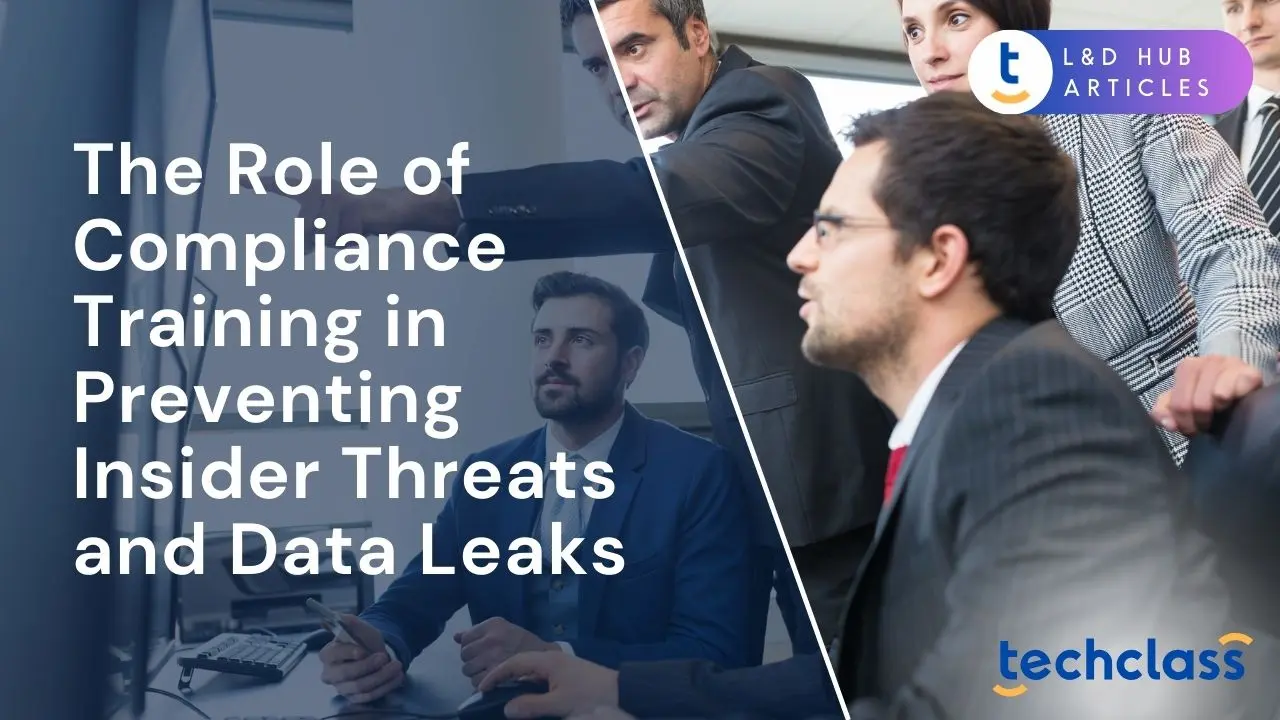
Cybersecurity headlines often focus on external hackers, but organizations also face serious risks from within. Insider threats refer to security breaches caused by people with legitimate access, employees, contractors, or partners, who either maliciously or accidentally harm the organization. These insiders exploit their trusted status to leak data, abuse systems, or ignore security protocols. The damage can range from stolen intellectual property and leaked customer data to disrupted operations and legal violations. Human error and insider actions play a role in an overwhelming majority of breaches; nearly 88% of data breach incidents are caused or worsened by employee mistakes. This means even well-intentioned staff can unwittingly become conduits for cyber incidents through careless behavior.
Insider threats come in two main forms. Malicious insiders deliberately steal data or sabotage systems, often motivated by financial gain, revenge, or espionage. High-profile cases, from a disgruntled IT administrator wiping servers to a rogue employee selling confidential data, highlight how much damage a single insider can inflict. On the other hand, negligent insiders are employees who mean no harm but lack awareness. They might click on phishing emails, use weak passwords, or send sensitive files to the wrong recipient. Such mistakes are common: the majority of insider incidents (about 55%) are caused by careless employees, according to Ponemon Institute research. Whether intentional or not, insider-triggered leaks can bypass traditional security because insiders already have authorized access (“the keys to the castle”). This makes insider incidents especially dangerous and often harder to detect until it’s too late.
To grasp why compliance training is vital, it’s important to understand how insider threats lead to data leaks. Insiders typically have legitimate access to sensitive information, allowing them to leak or misuse data without needing to hack in. A well-meaning employee might save client data to an unsecured personal device or fall for a social engineering trick, accidentally exposing records. For example, sending confidential files to the wrong email address is a simple mistake that accounts for roughly 43–45% of breaches caused by human error. On the malicious side, insiders can intentionally steal data, as seen in cases like a former tech employee downloading thousands of confidential files to benefit a competitor. Insiders also know the company’s systems and processes, which helps them evade detection, a reason why insider breaches often take months to discover and contain.
The consequences of insider-caused data leaks are severe. Sensitive personal data might end up on the dark web or in the hands of competitors, breaching customer trust. Intellectual property theft by an insider can cost a company its competitive edge overnight. Moreover, insiders can cause regulatory nightmares: leaking customer or patient data can violate laws like GDPR or HIPAA, leading to hefty fines and legal actions. Unlike external breaches that might be stopped at the firewall, insider leaks exploit legitimate pathways, so the usual perimeter defenses offer little protection. This all underscores why organizations must actively address the human element of security.
Beyond reputational damage, insider threats carry a steep financial cost for organizations. Studies show that the average annual cost of insider security incidents is in the tens of millions. One global analysis found companies spent $16.2 million on average in 2023 responding to insider-related incidents, a figure that rose from $15.4M the year prior. This upward trend continues; by 2025, the annual average reached $17.4 million per organization. These costs include investigating insider breaches, containing the damage, remediating systems, and dealing with fallout such as customer notification and regulatory fines. Notably, breaches caused by malicious insiders tend to be the most expensive: IBM’s data breach research shows malicious insider incidents average about $5 million in direct costs each.
Why are insider incidents so costly? First, they often go undetected longer than external hacks, so the damage accumulates. Insider leaks can trigger compliance fines (for instance, unauthorized disclosure of personal data under privacy laws) and expensive litigation. There’s also business disruption, one industry survey found that 50% of companies experiencing a data leak incident suffered business downtime or operational disruption as a result. Additionally, when an insider incident isn’t contained quickly, the expenses escalate sharply. For example, companies that took more than 90 days to contain an insider breach spent dramatically more (upwards of $18 million) compared to those that contained incidents within a month. All of these impacts hit the organization’s bottom line and emphasize that prevention is far cheaper than reaction. For HR professionals and business leaders, these figures make a compelling case: investing in preventive measures like training and awareness is not just an IT issue, but a business continuity and cost-saving priority.
In combating insider threats, compliance training emerges as a first line of defense focused on the human factor. While technology solutions (like monitoring and access controls) are critical, they cannot replace an educated, vigilant workforce. Many insider incidents boil down to a lack of knowledge or attentiveness, and that’s exactly what training seeks to fix. Regular security and compliance training equips employees with the knowledge to recognize risks and follow safe practices, thereby reducing the chance of mistakes. As one expert notes, a large share of insider threats are caused by carelessness, which is why “educating users about cybersecurity is so important”. When people understand company policies, the sensitivity of data, and the methods attackers might use, they are far less likely to err. For instance, training staff to spot phishing emails or suspicious requests can stop a breach before it starts. An employee who has been trained to double-check email recipients and encrypt files is much less likely to accidentally leak data. In short, compliance training addresses the root cause of most insider leaks: human error and ignorance.
Equally important, training can act as a deterrent for malicious behavior and encourage a culture of ethics. A comprehensive compliance training program covers not only how to do things right, but also the consequences of doing them wrong. Employees learn about data classification, confidentiality obligations, and legal/regulatory penalties for data mishandling. Knowing that stealing data or bypassing controls could lead to termination or even prosecution may dissuade an employee who is disgruntled but rational. Moreover, training emphasizes that security is everyone’s responsibility, not just the IT department’s. This empowerment means employees are more likely to speak up or report suspicious activities by colleagues. In organizations with strong awareness programs, an employee is trained to notice warning signs, say, a co-worker downloading unusually large amounts of data or asking for access they don’t need, and to report that red flag through proper channels. Such vigilance can stop an insider plot early. Indeed, leading insider threat programs integrate training and awareness as core components, recognizing that well-trained staff become an extension of the security team. They act as human sensors and gatekeepers, amplifying the organization’s ability to prevent breaches from within.
Finally, many industries and regulations require ongoing compliance and security training. For example, healthcare organizations must train staff on patient privacy (HIPAA requirements), and financial firms must educate employees on protecting client data. Regulators expect companies to document these training efforts as part of compliance audits. By providing robust training, companies not only reduce risks but also meet their compliance obligations and demonstrate due diligence in protecting data. In summary, compliance training matters because it transforms your workforce from a potential liability into a resilient defense layer. With insiders involved in such a high percentage of incidents, ignoring training is not an option.
Not all training is created equal. To truly prevent insider threats and data leaks, compliance training must be practical, engaging, and relevant. Here are key elements and best practices of an effective program:
By incorporating these elements, companies ensure that their compliance training is not just a formality, but a practical tool that actively reduces the likelihood of insider threats and data leaks. Employees come away not only knowing the rules but also understanding why they exist and how to apply them day-to-day.
While training provides the knowledge and skills, it’s the broader organizational culture that determines whether that knowledge is put into practice consistently. A key role of compliance training is to help cultivate a culture of security awareness and accountability across the enterprise. In a strong security culture, every employee feels responsible for safeguarding data and empowered to take action if something seems wrong. Achieving this means going beyond annual training modules, it requires leadership, communication, and the right environment.
Firstly, leadership should champion security and compliance openly. When management emphasizes that following security protocols is an essential part of the job, equal in importance to revenue goals or customer service, it sets the tone for everyone. Incorporating security objectives into performance reviews or team meetings can reinforce that message. Moreover, encouraging open communication about security concerns is vital. Employees should feel safe reporting a potential insider issue or admitting a mistake (like clicking a phishing email) without fear of embarrassment or retaliation. If people hide their errors, small issues can fester into major breaches. A culture that treats security incidents as learning opportunities rather than automatic punishment (except for malicious intent) will get quicker reporting and response. As noted in an insider risk guide, employees must “feel safe reporting threats without fear of retaliation”. This psychological safety allows the organization to catch problems early, whether it’s an employee struggling with security procedures or one deliberately circumventing them.
Another cultural aspect is employee engagement and morale. Surprisingly, one of the best defenses against malicious insiders is simply having satisfied, valued employees. Disgruntled staff with pent-up grievances are more likely to turn rogue or rationalize harmful actions. By contrast, employees who feel respected and part of the mission are less inclined to “betray” the organization. A positive workplace culture can thus mitigate the risk of insider threats born from resentment. As one compliance expert observed, “Employees who feel valued and engaged are less likely to harbor grievances that could lead to malicious actions.” Training can contribute here by highlighting the ethical dimension of everyone’s role and showing how protecting data is aligned with the organization’s values and success. Many companies also integrate discussions of ethics and integrity into their compliance training, underlining that behaving securely is part of being a good organizational citizen.
Finally, fostering a security-aware culture means integrating training and awareness into everyday workflows. This could involve things like visible reminders (posters about phishing in the office, or security tips on the company intranet), celebration of good security behaviors (rewarding teams with the highest security quiz scores, for example), and cross-department collaboration. HR and IT can work together to ensure new hires receive solid security onboarding, and that departing employees undergo proper offboarding to prevent data theft. Some organizations form insider threat working groups that bring together HR, IT, legal, and compliance departments to regularly review insider risk indicators and coordinate responses. In such teams, insights from training (like areas where employees struggle) can inform broader risk mitigation strategies, and vice versa. The takeaway is that preventing insider threats is not solely the IT or security team’s job, it’s a shared responsibility woven into the company’s fabric. Compliance training is the vehicle to drive that shared understanding, but it must be reinforced by leadership actions and a supportive environment. When done right, the end result is a culture where employees become vigilant guardians of the organization’s data, rather than points of vulnerability.
Insider threats and data leaks will always be challenging because they involve that unpredictable variable: human behavior. However, as we have explored, a proactive approach centered on compliance training can significantly tilt the odds in an organization’s favor. By educating and engaging employees, we transform them from potential risks into the company’s first line of defense. Well-trained staff are quick to spot suspicious activities, diligent in following security protocols, and mindful of the sensitive data they handle, essentially acting as a “human firewall” to contain threats that technology alone might miss.
For business leaders, the mission is clear. Investing in comprehensive compliance and security training is not just about ticking a regulatory box; it’s about building organizational resilience. Every policy and technical control can be undermined by a single uninformed click or a malicious act, but the reverse is also true, a single alert employee can stop a disaster in its tracks. Ultimately, preventing insider threats and leaks isn’t a one-time project but an ongoing commitment to a security-aware workplace. It means continually reinforcing the message that security is everyone’s job and providing the knowledge and tools for people to do that job well. When employees understand the “why” behind security and feel equipped to uphold it, they take pride in protecting the organization’s crown jewels.
In today’s environment, where data is invaluable and threats can come from any corner, organizations that empower their people through training and a strong security culture will always be a step ahead. They recognize that while technologies will assist, it’s the human factor, educated, vigilant, and ethically guided insiders, that truly keeps the company safe from within. By turning insiders into allies through effective compliance training, businesses can greatly reduce the chances of the next big breach headline being about them. In summary, building a robust human firewall may be one of the best defenses against insider threats and data leaks, and that starts with knowledge, awareness, and a culture that supports doing the right thing.
Insider threats are security risks from people with authorized access, such as employees or contractors, who intentionally or accidentally cause harm. They are dangerous because insiders already have legitimate system access, making their actions harder to detect and potentially more damaging than external attacks.
Compliance training educates employees on security policies, data handling rules, and threat awareness. It reduces risks by addressing human error, teaching best practices, and fostering vigilance against suspicious activity, turning employees into proactive defenders.
Negligent insider behavior includes clicking phishing links, using weak passwords, sending sensitive files to the wrong recipient, or storing confidential data on unsecured devices. These actions are often unintentional but can still lead to serious data breaches.
Continuous training ensures employees stay updated on evolving threats and policies. Regular refreshers, phishing simulations, and updated modules help reinforce secure habits and close knowledge gaps before they result in incidents.
A strong security-aware culture encourages employees to follow protocols, report issues promptly, and feel accountable for protecting data. Leadership involvement, open communication, and employee engagement all help reduce both malicious and negligent insider risks.


